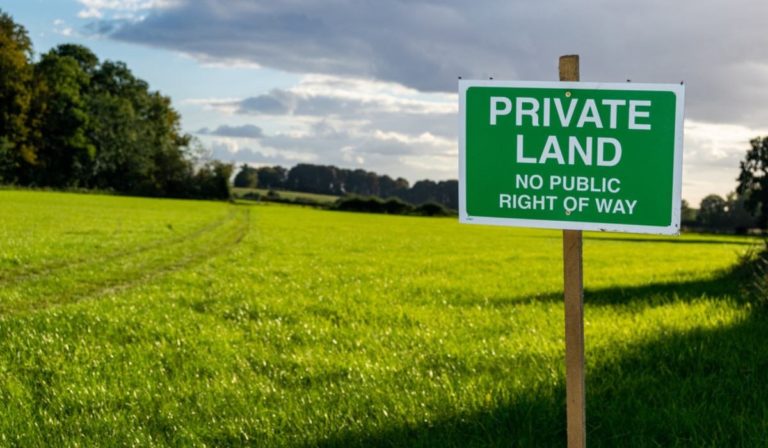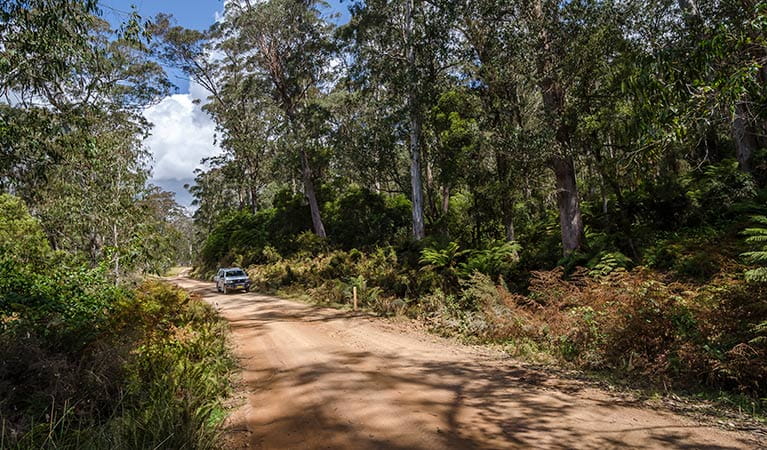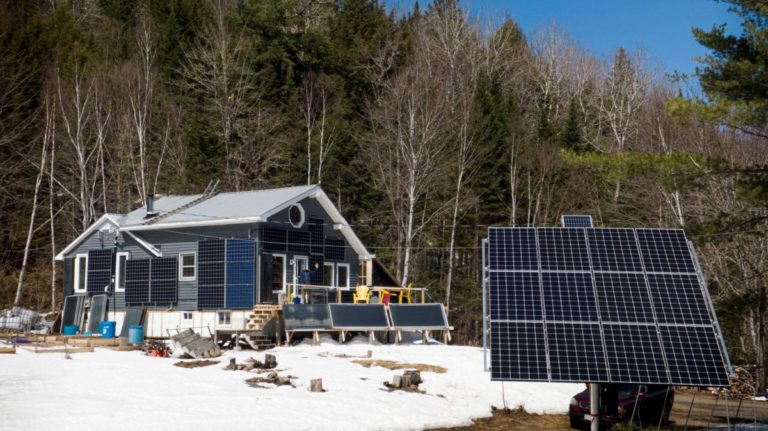Are you considering purchasing land off the grid?
Whether it’s for a vacation retreat or a full-time homestead, buying property without access to electricity and water infrastructure can be both exciting and intimidating.
To ensure a successful purchase, it’s essential to master the research process before making an offer.
We will guide you through each step of the research process, from identifying your needs to verifying property boundaries and assessing feasibility for off-grid living.
With these tips and resources, you can confidently navigate the process of finding your perfect piece of land in the great outdoors.
Let’s get started!
Define your goals and needs
Before starting your research, it’s important to define your goals and needs for the land purchase. This will help you focus your research and make decisions that align with your objectives.
This step is essential in helping you stay focused and make informed decisions that align with your objectives.
By clearly defining your goals and needs, you can narrow down your search to properties that meet your specific requirements, rather than wasting time and resources on irrelevant options.
For instance, you may have a goal to purchase a parcel of land for residential use, and your needs may include proximity to schools, access to clean water, and a certain amount of acreage.
By defining these parameters, you can evaluate potential properties based on their suitability for your needs, and make a decision that fulfills your objectives.
Having a clear understanding of your goals and needs will help you anticipate potential challenges and opportunities, and make adjustments to your research strategy as needed.
By taking the time to define your objectives before starting your search, you can ensure that your research is productive and leads to a successful land purchase.
Identify the land characteristics
Research the land characteristics such as size, location, topography, soil type, water availability, and zoning restrictions. This will help you determine if the land is suitable for your intended use.
When considering purchasing or developing land, it is essential to research the property’s characteristics to determine its suitability for your intended use.
Size is an important factor, as a larger parcel may offer more possibilities for development or agricultural use, while a smaller parcel may be better suited for a single family home or small business.
Location is also important, as proximity to amenities, transportation, and other resources can significantly impact the property’s value and potential uses.
Topography and soil type can also affect the property’s suitability, as sloped or hilly land may be more challenging to develop or farm, while flat or fertile soil may be more ideal.
Water availability is another critical factor, as access to a reliable source of water can be essential for agriculture, industry, or residential use.
Zoning restrictions can greatly impact the property’s potential uses, so it is important to research and understand these regulations before investing in a piece of land.
By carefully considering these land characteristics, you can determine if the property is suitable for your intended use and make an informed decision about your investment.
Research the property history
Look into the property’s history, including past ownership, land use, and any historical events that may have impacted the property. This can help you identify potential issues or opportunities.
When investigating a property’s history, it is important to delve into its past ownership, land use, and any historical events that may have impacted the property.
This research can reveal potential issues or opportunities that can significantly impact the property’s value and potential for future development.
For instance, if the property was once a industrial site, it may have been contaminated with hazardous materials, which could lead to costly remediation and potentially affect its development potential.
On the other hand, if the property has a long history of residential use, it may be less likely to have environmental issues and more suitable for renovation or expansion.
Moreover, past ownership and land use can also provide valuable insights.
For example, if the property was previously owned by a reputable developer or institution, it may have been better maintained and have more potential for long-term profitability.
Similarly, if the property has been consistently used for agricultural purposes, it may have more development potential for agri-business ventures.
Historical events such as natural disasters, economic downturns, or social unrest may have impacted the property’s value and potential for development.
By understanding the property’s history, investors can make more informed decisions and avoid costly mistakes.
Investigating a property’s history is a important step in the due diligence process.
It can reveal potential issues or opportunities, provide valuable insights into the property’s development potential, and help investors make more informed decisions.
Evaluate the local economy
Research the local economy, including the local businesses, employment opportunities, and infrastructure. This will help you understand the potential for economic growth and development in the area.
To research the local economy, start by surveying the local businesses in the area.
Look for industries that are thriving, such as tech, healthcare, or manufacturing, and see if there are any emerging sectors that could provide potential for growth.
You can also check out local employment opportunities and see if there are any job openings that align with your skills and interests.
Take note of the infrastructure in the area, such as transportation systems, utilities, and communication networks, as these can impact the potential for economic growth and development.
By understanding the local economy and identifying areas for growth, you can make an informed decision about your future in this location.
Assess the local resources
Research the local resources, such as water, forests, minerals, and wildlife. This will help you understand the potential for sustainable living and resource management.
As you begin your research on sustainable living and resource management, it is important to investigate the local resources available in your area.
Water, forests, minerals, and wildlife are all essential components of sustainable living and can greatly impact the feasibility of your dream.
Start by examining the water resources in your area.
Are there any natural springs, rivers, or lakes nearby?
Are there any water conservation measures in place?
Understanding the local water supply will help you determine the potential for irrigation, wastewater management, and other water-intensive activities.
Next, turn your attention to the forests in your area.
Are there any dense forests, woodlands, or tree plantations nearby?
What types of trees are present?
Forests provide vital ecosystem services such as clean air and water, soil conservation, and habitat for wildlife.
By understanding the local forest resources, you can better assess the potential for sustainable timber harvesting, forest conservation, and reforestation efforts.
Minerals are another important local resource to consider.
Are there any mineral deposits or mines nearby?
What types of minerals are present?
Mineral resources can greatly impact the feasibility of sustainable energy production, such as geothermal or solar power, and can also provide materials for construction and other industries.
Take inventory of the wildlife in your area.
What types of animals are present?
Are there any endangered species nearby?
By understanding the local wildlife populations, you can better assess the potential for sustainable agriculture, conservation efforts, and wildlife management practices.
Researching the local resources of water, forests, minerals, and wildlife is important to understanding the potential for sustainable living and resource management.
By assessing these resources, you can gain a deeper understanding of the ecosystem and make more informed decisions about sustainable development, conservation, and resource use.> In order to effectively manage local resources and foster sustainable living, it is important to thoroughly research the water, forests, minerals, and wildlife in your area.
Start by investigating the availability of clean water sources and the condition of nearby forests.
This will provide insight into the potential for sustainable timber harvesting, forest conservation, and reforestation efforts.
Explore the presence of mineral deposits and mines in the area.
This will help you understand the feasibility of sustainable energy production, such as geothermal or solar power, and provide materials for construction and other industries.
Take inventory of the wildlife in your area, including endangered species.
By assessing the local wildlife populations, you can better understand the potential for sustainable agriculture, conservation efforts, and wildlife management practices.
All of this information will provide a comprehensive understanding of the resources in your area, allowing you to make more informed decisions about sustainable development, conservation, and resource use.
This research will serve as a solid foundation for a sustainable future, allowing you to utilize the resources in your area in a way that minimizes environmental impact and maximizes long-term benefits.’]] To effectively manage local resources and foster sustainable living, it is important to conduct thorough research on the water, forests, minerals, and wildlife in your area.
This research will provide a comprehensive understanding of the resources available, allowing you to make more informed decisions about sustainable development, conservation, and resource use.
Start by investigating the availability of clean water sources in your area.
This will provide insight into the potential for sustainable timber harvesting, forest conservation, and reforestation efforts.
Look for sources of clean drinking water, as well as waterways that support fishing and aquatic life.
This information will help you identify areas that are particularly important for resource management and conservation.
Next, examine the forests in your area and assess their health and biodiversity.
This will help you understand the potential for sustainable timber harvesting and reforestation efforts.
Look for signs of forest degradation, such as overgrazing or insect infestations, and assess the risk of forest fires.
This information will help you prioritize conservation efforts and make informed decisions about sustainable land use.
Next, investigate the mineral resources in your area, including metals and non-metallic minerals.
This will provide insight into the potential for sustainable mining and resource extraction.
Look for areas with high mineral deposits, as well as areas that are particularly vulnerable to mining-related environmental impacts.
This information will help you prioritize sustainable mining practices and make informed decisions about resource extraction.
Assess the wildlife in your area and identify any endangered or threatened species.
This will help you understand the potential for conservation efforts and the importance of protecting sensitive habitats.
Look for areas with high levels of biodiversity and assess the risk of habitat fragmentation.
This information will help you prioritize conservation efforts and make informed decisions about sustainable land use.
By researching these local resources, you will gain a better understanding of the potential for sustainable living and resource management in your area.
This information will help you make informed decisions about land use and resource extraction, and will help you prioritize conservation efforts to protect sensitive habitats and promote biodiversity.].
Investigate local zoning and land-use regulations
Research the local zoning and land-use regulations to understand the limitations and opportunities for the land use.
Researching the local zoning and land-use regulations is a important step in understanding the limitations and opportunities for the land use.
Zoning laws dictate how property can be used, including whether it can be used for residential, commercial, or industrial purposes.
Land-use regulations may limit the density of development, the height of structures, and the type of buildings that can be constructed.
By understanding these regulations, you can determine if the property is zoned for the intended use, and if there are any restrictions on the types of improvements that can be made.
For example, if you’re planning to build a residential property, you’ll need to ensure that the land is zoned for residential use and that the local building codes allow for the construction of single-family homes.
Failure to research these regulations can lead to costly legal battles and delays in your development plans.
Therefore, it is essential to thoroughly research local zoning and land-use regulations before purchasing vacant land to ensure that your plans are feasible and compliant with local laws.
Analyze the market trends
Research the local real estate market trends, including property values, sales data, and market conditions. This will help you make an informed decision about purchasing the land.
Absolutely!
To ensure a wise investment, it is important to conduct thorough research on the local real estate market trends before purchasing land.
This includes studying property values, sales data, and market conditions.
By analyzing these factors, you can gain valuable insights into the current state of the real estate market and make an informed decision about your purchase.
For instance, if property values in the area are appreciating, it may be a good time to invest in land.
On the other hand, if sales data indicates a slowdown in the market, you may want to consider waiting for a better opportunity.
Understanding market conditions such as supply and demand, interest rates, and government policies can help you navigate the market and make a more informed decision.
By taking the time to research the local real estate market trends, you can make a more confident and profitable investment in the land you choose.
Consult with experts
Consult with experts such as real estate agents, lawyers, and local residents to gain a deeper understanding of the property and the area. This will help you make a more informed decision about purchasing the land.
When considering purchasing a plot of land, consulting with experts such as real estate agents, lawyers, and local residents can provide invaluable insight and help you make a more informed decision.
Real estate agents have extensive knowledge of the local market and can provide valuable information about the property’s history, its potential for future development, and any zoning or land-use regulations that may affect its usage.
Lawyers can help you navigate the legal aspects of the purchase, such as reviewing contracts and ensuring that the sale is properly documented.
Local residents can offer valuable insight into the area’s character and potential for growth, as well as any potential issues or concerns that may affect the property’s value.
By consulting with these experts, you can gain a deeper understanding of the property and the area, which will ultimately help you make a more informed decision about purchasing the land.
Want More? Dive Deeper Here!
Hey there! If you’re the type who loves going down the rabbit hole of information (like we do), you’re in the right spot. We’ve pulled together some cool reads and resources that dive a bit deeper into the stuff we chat about on our site. Whether you’re just killing time or super into the topic, these picks might just be what you’re looking for. Happy reading!






